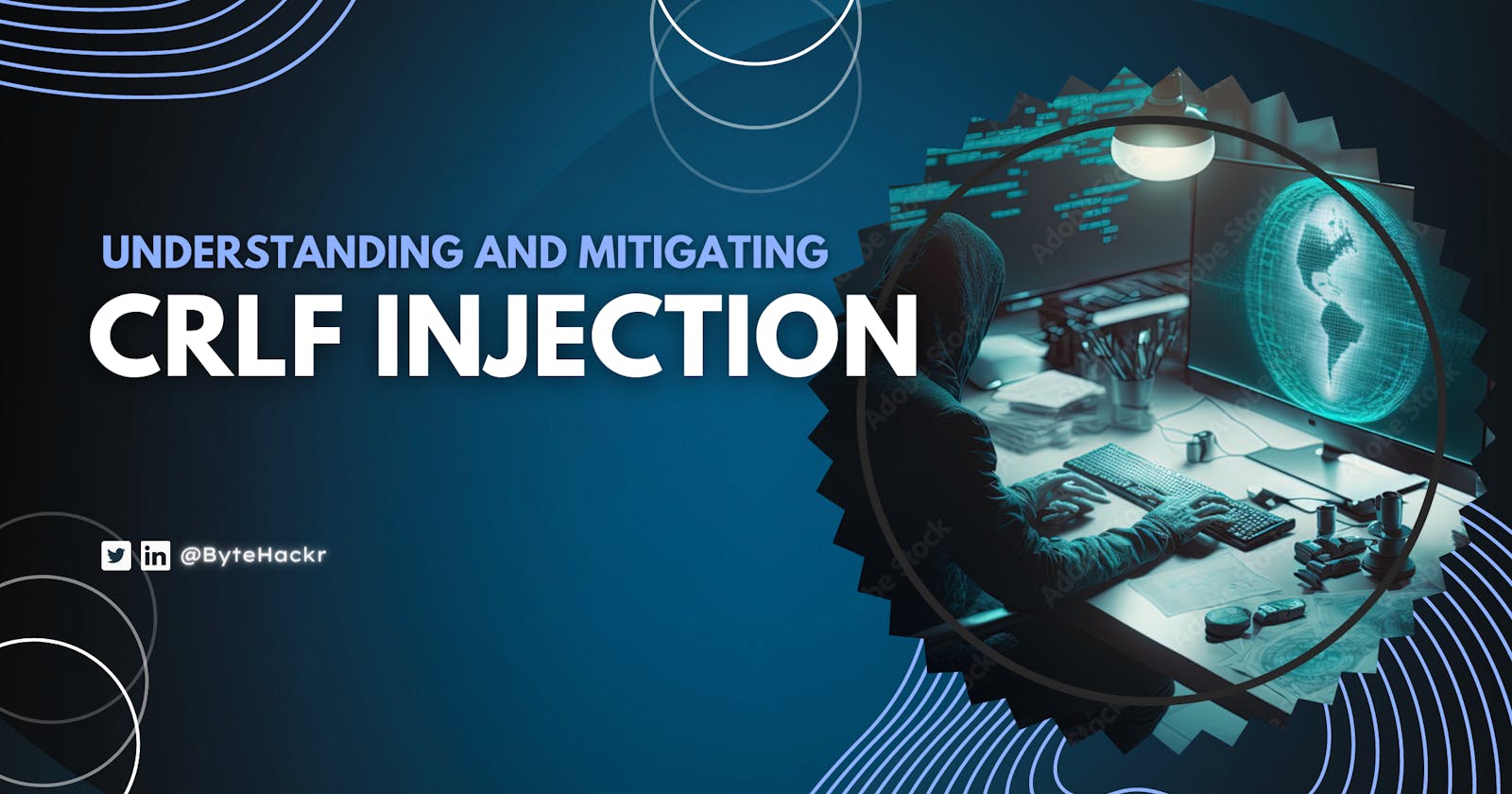In the realm of web application security, CRLF (Carriage Return Line Feed) injection vulnerabilities pose a significant threat to the integrity and confidentiality of user data. By understanding the nature of CRLF injection and adopting preventive measures, developers and security practitioners can fortify their applications against this potential exploit. In this blog post, we will delve into the details of CRLF injection, explore its potential risks, and provide actionable steps to prevent such vulnerabilities.
Understanding CRLF injection
CRLF (Carriage Return Line Feed) injection is a web application vulnerability that occurs when an attacker is able to insert unexpected CRLF characters into an HTTP response. These characters represent the end of a line and are used to control the formatting and structure of text data.
CRLF injection attacks can have several consequences, including:
HTTP Response Splitting: By injecting CRLF characters, an attacker can manipulate the HTTP response headers and insert additional headers or control the response structure. This can lead to various attacks, such as cache poisoning, cross-site scripting (XSS), or session hijacking.
Cross-Site Scripting (XSS): Attackers can inject malicious scripts or content into the response, which can be executed by a victim's browser. This allows them to steal sensitive information, perform unauthorized actions, or perform phishing attacks.
HTTP Request Smuggling: CRLF injection can be used in combination with other techniques to smuggle or manipulate HTTP requests. This can bypass security controls, tamper with request data, or perform privilege escalation attacks.
Example of a CRLF injection
Here's an example to illustrate how CRLF injection can be exploited:
Suppose there is a web application that takes user input and generates an HTTP response without proper validation or sanitization. The application includes the user input in the response header without correctly filtering out CRLF characters.
GET /search?term=userinput HTTP/1.1
Host: vulnerable-bytehackr.com
If an attacker provides the following input as the search term:
%0D%0AContent-Length: 100%0D%0A%0D%0AHTTP/1.1 200 OK
The resulting response might look like:
HTTP/1.1 200 OK
Content-Type: text/html
Content-Length: 100
<html>
<body>
<h1>Search results for 'userinput'</h1>
...
</body>
</html>
In this example, the attacker's input contains %0D%0A, which represents the CRLF sequence. As a result, the attacker injected a new line, followed by additional headers (Content-Length in this case), and an entirely new HTTP response (HTTP/1.1 200 OK).
The consequences of this injection can vary depending on the specific context and the vulnerability's impact. However, the general idea is that the attacker gains control over the response, which can lead to various malicious activities.
Preventing CRLF Injections
To prevent CRLF (Carriage Return Line Feed) injection vulnerabilities, you should apply proper input validation, output encoding, and adhere to secure coding practices. Here are some measures you can take to mitigate the risk of CRLF injection attacks:
Input Validation:
Validate and sanitize user input to ensure it does not contain CRLF or any other special characters that could be used for injection.
Use input validation techniques such as whitelisting or regular expressions to restrict input to expected patterns or known safe characters.
Output Encoding:
Encode user-generated content or any data that is dynamically included in HTTP responses or headers.
Use appropriate encoding functions specific to the output context (e.g., HTML encoding, URL encoding, or header encoding).
Ensure that encoding is applied consistently and correctly throughout your application.
Strict Contextual Output:
When inserting user input into HTTP responses or headers, be cautious and avoid using untrusted input directly.
Always separate user input from the context of HTTP messages by using proper encoding or quoting techniques.
Validate and filter user input to ensure it contains only allowed characters for the specific context.
Security Libraries/Frameworks:
Utilize secure coding libraries and frameworks that have built-in protection against CRLF injection vulnerabilities.
These frameworks often provide input validation, output encoding, and security features out-of-the-box, reducing the risk of introducing vulnerabilities.
Here's an example of preventing CRLF injection in a PHP application:
// Example of validating and sanitizing user input
$searchTerm = $_GET['term'];
$cleanSearchTerm = filter_var($searchTerm, FILTER_SANITIZE_STRING);
// Example of encoding output when including user-generated content in an HTTP response
$searchResults = '<h1>' . htmlentities($cleanSearchTerm) . '</h1>';
echo $searchResults;
In this PHP example, the filter_var() function is used to sanitize the user input by removing any potentially harmful characters. The htmlentities() function is used to encode the user-generated content when including it in an HTML response, ensuring that any special characters are properly encoded.
Conclusion
CRLF injection vulnerabilities can have severe consequences, compromising the security and functionality of web applications. Understanding the risks associated with CRLF injection and implementing preventive measures is crucial to ensure the integrity and confidentiality of user data. By adopting secure coding practices, validating input, encoding output, and relying on security libraries, developers can fortify their applications against CRLF injection attacks and enhance the overall security posture.

